There is no sound barrier, at least in music.
Everyone hears it inside them so everyone makes it. Every culture has had the drum...the heartbeat remembered from the womb. Everyone has always danced...the inner feelings made physical. Everyone feels sensual, feels amped or elated...catharsis turned into a body language. Every one can uplift everyone...a person's moves can spark mass movement.
Funk is universal. Like life, when everyone contributes to it then everyone advances. It is a wheel, with varied spokes that strengthen it and propel it forward. It is also cyclical, where what went around comes around again. Culture isn't constant or owned by a pure group, it is constantly renewing itself through everyone's additions. It is an intersection of ideas. There is no Either/Or in reality...only "and". Funk is all about "and". It is hybrid, synthesis, fluidity, diversity. Funk is inclusive and thus ever expansive. Funk is sliced in familial tones.
Every time you pick up a Funk CD collection it's usually the same 12 songs over and over. It reinforces the closed idea that Funk is party grooves from the late 70's, by 14 guys with great afros. Partially, but hardly. Funk has been a mutating form -which includes every sound and everyone- for the last five decades. As an outgrowth of Rock and Soul it has trysted with every genre and subculture. Funk is a family affair.
Let me extend a point about Funk's inclusion by first debunking exclusion thinking. A painter will tell you straight up that 'Black' and 'White' aren't even colors...they're neutrals and are not in the color spectrum. Real life is in actual color, which is a recombination of all the seven colors in constant rotations. Meaning, when you paint or photograph anyone, they're composed of the same colors in varying degrees. What makes you is the same that makes another: you breathe, you feel, you dream, you act. Using extremities like Black and White as a reverse prism to divide Life from its vivid variation back down to Either/Or is as small-minded as it is sad. Since actual life is one human race with the creativity to have myriad cultural ideas to share, let's exercise some more of that "and" here.
This is an inclusion party so excluders are out. (Ba-dump-bump.) The straight up deal is that everybody was responding to each other to create this culture, as per usual. So the tired programming that limits the usual narrative on music is absent here; no Us vs. Them, no Colonialist Absolutism, no Purity Group, no faith-based supremicism, no radio segregation, no more No's. "Cynthia and Jerry got a message they're saying/ 'All the Squares, go 'round!" This is music by the people for the people. Funk is everyday people.
Radio has segregated people's mindsets for decades. But a DJ's record crate tells the real story: Funk is any kicking dance groove made by anyone. The stocatto drums of Latin percussionists, the fuzzed out R'n'B of Garage rockers, the bopping cascades of hip Jazzsters, the Country Soul of swamp rockers, the hardcharging whomp of the Psychedelics, the Soul Pop of Detroit and Memphis and London, the gutbucket gumbo of New Orleans, the slunkyness of Blues, the saunter of Reggae, the cool grooves of Italian and French and German soundtracks, the sunshine kick of Tropicalismo, the sitar sythesis of India. The reason is that everyone saw each other truly by listening to each other and responding to their cues. True Funk is an intersection of ideas.
Take that weak 12-song CD and throw it in the recycle. I'm spinning this party and you're about to dance your way out of any constrictions!
PRE-FUNK: The Roots
by Tym Stevens
What paths led to this crux point? Here are some ingredients of the Pre-Funk that are essential to the gumbo:
1) SWING JAZZ honed Jazz into a tight, horn-driven dance music that took the 40's by storm. Those syncopated horns were a sensation that sinned up the nation. It ignited the first taste of teen ecstasy, with jitterbuggery rampant. World War II shortages at home slimmed the big bands down into quintets that ricocheted the new highways, spreading the Boogie fever in a tighter sound.
Louis Jordan and Louis Prima hammed a hilarious burlesque that would thread from The Coasters to P-Funk to Fishbone to Outkast. The horn sections drove Rhythm'n'Blues, Soul, and then Funk and Disco; from Little Richard's band the Upsetters, James Brown with The JB's, and The Mar-Keys, to Tower of Power, Earth Wind & Fire, Parliament, Al Green, KC & the Sunshine Band, and Defunkt. The electric guitar brought in by Charlie Christian would lead to Tiny Grimes, Mel Travis, Les Paul, Johnny "Guitar" Watson, BB King, and Rock'n'Roll, as well as Jazz maestros like Wes Montgomery, Grant Green, and John McLaughlin. Horn players expanded the palette into the abstract, complex moodscapes of Bebop and FreeJazz thanks to Charlie Parker, Dizzy Gillespie, Miles Davis, and John Coltrane.
2) ROCK'n'ROLL is crucial to Funk. Just as rural roots Country and Blues are intertwined (and often interchangeable) by sound, space, and shared experience, so Country Swing is twined with Jump Jive. Bob Wills loved Count Basie, and there are as many country boogie songs as blues or jazz boogie in the late 40's. The barbed sting of blues guitar morphed with the sliquid licks of Honky Tonk and Bluegrass to mutate into Rockabilly. Why? Because kids listen to everything and refract it new. There is no future without "and". Rock will give Funk its intense kick, its rebellious swagger, and its mercurial temper.
The gallop of rockabilly, the tight pop and tough sass of Girl Groups, the jet-engine guitar blast of Surf and the British Invasion, the fuzz and sneer of Garage, the tribal pyrotechnics of Psychedelia, the flamboyancy of late 60's fashion and politics and philosophy... all of these are reflected in the great funk acts.
3) MAMBO and Afro-Cuban Jazz are undervalued and overlooked. Mambo music was king in the early 50's, on the heels of Swing Jazz and Jump Jive. Those drums, "Good Gahd!" It turned Swing into an even tighter propulsive rhythm with the sharp horn blasts, a sudden pause, and the band leader exclaiming, "Ungh!" This is the prototype for James Brown a decade ahead. Actually, Perez-Prado would get so excited he was grunting, "Dilo!" ("Say it!"), and kicking the air to drive the band on. Yes!
The propulsive beat of Latin musics will be a presence in Rock, Soul, and Jazz from then on, leading natutally into funky bands like Santana, War, El Chicano, Azteca, Malo, Los Lobos, Sheila E, Los Mocosos, and Ozomatli.
4) GOSPEL is the soaring voice of Funk. Church was where everyone learned to sing "a joyful noise". Mahalia Jackson was the Queen, singing with a depth of feeling beyond any recorded before. Listen to her take raw intimacy to an operatic level, turning spiritual struggle into transcendence. Along with her will come amen sisters and brothers, uplifting anthems, and sometimes even choirs.
From Gospel we got Sam Cooke, Aretha Franklin, Johnny Taylor, the Womacks, The Chambers Brothers, Al Green, The Staples Singers, Rance Allen, and many more.
5) SOUL is the savvy stepchild. Mahalia wouldn't sing direct Blues because it was profane to her. But she listened to it and reflected it. Ray Charles melded Gospel and Blues (with touches of Jazz boppery and Country confessionals) to create Soul music. His true genius is radiating those select adult musics through Pop music that made kids jump around the globe. His voice carried the exalted grin of the sacred merged with the satisfied smirk of the profane. Thesis+ Antithesis=Synthesis.
Listen to that church organ boogie and sway, sneer and laugh, on "What'd I Say". Keyboards will become intrensinc to the future of Funk -from piano and Hammond to Clavinet, Moog, Arp, and Fairlight: Shirley Scott, Jimmy Smith, Billy Preston, Sly Stone, Steve Winwood, Herbie Hancock, Stevie Wonder, Bernie Worrell, Isaac Hayes, Chris Jasper, Kraftwerk, Prince, Galactic, Medeski Martin & Wood, Soulive.
Soul music is personified by the funky Memphis Group, Booker T & The MG's. It's already there in 1961's "Green Onions": a lockstep rhythm section that struts, an eerie but earthy organ, and that chopping clank of guitar. Who needs words when you got the feeling? Like their studio counterparts in Muscle Shoals, Alabama, they were varied complexions with unified hearts playing together On The One, between them both backing up nearly every great Soul record of the decade unfolding.
6) BLUES is the heavy vibe, the moan, the moody conduit. Muddy Waters was the first acoustic bluesman to go electric in Chicago and revel in the new sting. He was a big man who got bigger with amplification. 'Rock'n'Roll' had long been slang for "doing it", and 'funk' is the earthy, unapologetic, delirious scent that it produces. Before anything else, dance music is sensual. It conveys in sways, tangos in tangles, gets down to get with.
Blues undergirds the funk of Jimi Hendrix, Sly Stone's "I Want To Take You Higher", Santana, The James Gang, Led Zeppelin, The Rolling Stones, early Funkadelic, The Doobie Brothers, The Vaughan brothers, Galactic, Tom Waits, Los Lobos, and Robert Randolph & The Family Band.
7) NEW ORLEANS, ah, and then there's New Orleans. A polyopolis city pumping out polyglot musics: Blues and Jazz, with Cajun Zydeco, Tex Mex, Native American chants, and Carribean rhythms, spiced by every culture that's graced its welcoming harbor. Listen to Professor Longhair's "Big Chief" with those contrapunctual Jelly Roll Morton piano rolls, underlined by those perfect skittershot drums. When they say Rock'n'Roll, this is the roll. Like Latin rhythms, New Orleans swaggers and kicks through Funk music forever.
Like Professor Longhair, Fats Domino, The Meters, Lee Dorsey, Alan Toussaint, Betty Harris, Doctor John, The Gaturs, The Neville Brothers, and Dirty Dozen Brass Band, to name some.
by Tym Stevens
FUNKY SOUL, 1965-1967:
Northern Soul, Southern Soul, Motown, Country Soul, Euro Soul, Soul Jazz, Rock'n'Soul, Latin Soul, Garage R'n'B, Funky Soul.
"And?" Well, by the mid-60's these ingredients start coming together in funky soul music like this. There are tons of songs on the music players, all arranged in basic chronological order. Often artists are responding directly to each other. You can enjoy the smorgasbord on your own, but I'll list a few tasty highlights from the menu here:
1) SHOTGUN, Jr. Walker & The All-Stars, 1965. Motown saxman puts it all in the pocket with a gutbucket vocal, kicking drums, pulsing bass, rhythmic clank, jazzy sax solos, and sharp horns. It's shining and dirty at the same time. Let's get funky!
2) I GOT YOU (I FEEL GOOD), James Brown, '65. Mr. Dynamite scribes the blueprint, turning every instrument into percussion, and bending rhythm into dynamics of tight sound and silences. Startling, a revolution in pop music, via mambo.
3) TREAT HER RIGHT, Roy Head, '65. This English soulster is the tip of a huge wave of them. James' example gives working class folks chafing at class limits the permission to bust out and declare their inner soul; Dusty Springfield, Eric Burdon, Georgie Fame, Evie Sands, Chris Farlowe, Steve Marriott, Julie Driscoll, Rod Stewart, Sharon Tandy, Joe Cocker, Ruth Copeland, Robert Plant...
4) BUTTERMILK, Sylvester Stewart, '65. Syl is a San Fran DJ by day, record producer by night. He is a hardcore Beatles and Stones fan who even sports a mop haircut. He produces Bay Area garage bands and demos of his own on the side. (That's his fuzz and backup vox on The Mojo Men's "She's My Baby.") He has this idea of a band that integrates everything, and the first name he tries is Sly & The Stoners...
5) 99-AND-A HALF WON'T DO, Wilson Pickett, '65. James Brown's rival headlong with him, fueled by the MG's. Guitarist Steve Cropper chanks that zen essence, Isaac Hayes weighs in on keys, and Patti Labelle swells the back-ups. (Her hair was cut at the time by a New Jersey barber and fledgling bandleader, George Clinton.)
6) TRAMP, Lowell Fulsom, '66. In this classic Lowell mocks the class war, proudly wearing his hick status like a strut. The raw and the real, the earthy and the edgy are the mantras of Funk. Even its name is rude. And that riff spawned legions, from The Doors' "The Changeling" to Salt'n'Pepa's "Tramp".
7) MUSTANG SALLY, Wilson Pickett, '66. "Wicked" Pickett had an amazing knack for the letter-perfect cover version. He got this from The Rascals, who got it from Sir Mack Rice. The osmosis of creativity in action. That riff is Wilson's proud strut personified, hard and bulletproof.
8) GET READY, The Temptations, '66. Motown's house band was (quietly) called The Funk Brothers. Pounding those wonderful supple basslines is James Jamerson, whose melodic and rounded tones start to crystallize the bass as the lead in funky Soul, and then Funk.
9) UNDERDOG, Sly & The Family Stone, '67. Oh my. Funky Soul had been defined by sharpsuited lotharios and damsel divas from the South and Midwest. But here comes a tribe of hippies from San Francisco, the first maplepeachguygal funky-soul-psychedelic-rock-band to upend everyyyyything. Here, they fly right off the turntable and into higher consciousness.
10) BABY, YOU'RE A RICH MAN, The Beatles, '67. Listen to that drum stride and that muscular bass. The band's On The One. But with it they bring an experimental palette of distorted rhythm guitar and alien recorder. Two prime fans of the Fab's, Jimi and Sly, will take these cues to open the colors of Rock'n'Soul wide open.
11) A DAY IN THE LIFE, Wes Montgomery, '67. He was master of the fluid Jazz guitar but also fluent in all the Pop idioms of the moment. He was an intersection for exchanges between, just like Jimmy Smith, Ramsey Lewis, Hugh Masekela, Charles Stepney, and later Miles Davis and Alice Coltrane.
12) I'M A MAN, The Spencer Davis Group, '67. From the first seconds on the vinyl version, you know you're in it. This English group was graced by Ray-fanatic Steve Winwood on both vocals and organ. He would soon make funky psychedelia with Traffic.
13) SOME KIND OF WONDERFUL, Soul Brothers Six, '67. Gutbucket gospel with humming like cellos and an excellent sparse guitar.
14) I GOT THE FEELIN', James Brown, '67. And James was blessed that he got Jimmy Nolan, whose crackling chicken-scratch guitar will become crucial to Funk. He also had Maceo Parker and Fred Wesley on horns, who were gold in polished shoes.
15) HIP HUG-HER, Booker T & The MG's, '67. As in grind your hips together. From that jarring lead guitar prancing down into the icicle stabs of Booker T's organ, it's on. This must have put James Brown on the good foot and in a bad mood.
16) HIP HUG, Slim Smith, '67. Jamaica has a love affair with American Soul and Pop music, doing endless remakes and responses with the added accent of their fantastic rhythm sections. This will blowup in the early 70's with Reggae, and the late 70's with Dub and Ragamuffin toasting.
17) CHAIN OF FOOLS, Aretha Franklin, '67. "Re-Re" channels Mahalia in a rebuke that seethes both rebellion and submission. The Muscle Shoals mafia backs her up.
18) LITTLE MISS LOVER, Jimi Hendrix Experience, '67. The other shoe now dropkicks everyone in the ass. Tighter and tougher than anything before it. Run. Between them, Jimi and Sly and The Beatles are rewriting the future of music. Sound, clothes, philosophies, and mores will expand "far as the eye can see".
by Tym Stevens
Hear the unlimited Playlist here.)
FUNKY ROCK, 1968-1969:
Funky Soul, Psychedelic Funk, Acid Jazz, Rock'n'Soul, N'awlins, Soulstrementals, Swamp Pop, Country Soul, Blues Rock, Funky Latin, Horn Rock, Jamaica Soul, Tropicalismo, Jazz Fusion.
So far everyone in pop and soul is competing with James' grooves, but meanwhile those two psychedelic upstarts are just getting their feet...
20) DANCE TO THE MUSIC, Sly & The Family Stone, '68. In round-robin they recite the new recipe. This song is the nexus of past and future: doo wop chorals, gospel organ, and swing clarinet from before; fuzz bass, electric blues, and proud snarl from now.
21) GIVE IT UP (AND TURN IT LOOSE), James Brown, '68. James drops melody for the Groove, the band a vamping backdrop for his spontaneous improvs. This 'raw and live' style will define funky soul for years. Jimmy Nolan nails it all down on strings.
22) I THANK YOU, Sam & Dave, '68. Stax stallions, in the pocket. Two gutbucket Rays for the price of one 45, they were the frontmen for co-writer Isaac Hayes, who tickles the keys. They were often backed by the MG's or the rising Bar-Kays from Memphis' legendary Stax Records studios.
23) GREEN ONIONS, Mongo Santamaria, '68. Mongo was savvy enough to cover the pop hits and good for him. More and more in the next two years, pop music will become underscored by Latin and African congas and Indian tablas.
24) MEMPHIS SOUL STEW, King Curtis, '68. When saxman Curtis breaks down the ingredients of Memphis soul, he's pretty much serving you the basics of Funk itself. "And now we need a pound of fatback drums" is one of the best lines ever! Featuring Bernard Purdie and Cornell Dupree.
25) HOUSE BURNING DOWN, Jimi Hendrix Experience, '68. Labeled 'Black', this AfricanIrishCherokee called himself human. Called a freak, he thought he was infinite. And he was. Hair from Dylan, clothes from "PEPPER", blues from chitlin, noise rain from Coltrane, outlook from Bradbury. Changed Rock'n'Roll into ROCK Music, inventing the future. As for Funk? The wah-wah pedal, tough rhythm, wild solos, the Sci Fi cosmology, the Afro, and the tribal clothes come from this guy. Here he laments the myopia of brothers hurting each other while aliens watch. Rock is no sidedish; it is actually the prime catalyst for eveything that will congeal as Funk.
26) LOVE CITY, Sly & The Family Stone, '68. Sly roars up, telling the tonic to hate: "Love city/ I want it now now now now!!" Sly wants unity, which will only come from inclusiveness, and his band lives it. Their existence forecasts a future for all. Soul was borne of the Civil Rights movement; the counterculture expands it to its fruition as the human movement. Sly and Jimi are ambassadors of the new view.
27) I DON'T KNOW WHY I LOVE YOU, Stevie Wonder, '68. The rising prince is listening to James, Sly, and psychedelia and absorbing it all. He's already kicking out chestnuts like this one, with its revolutionary use of the Classical clavinet foreshadowing what's to come.
28) THE HORSE, Cliff Nobles, '68. Besides becoming the official high school band anthem, this song is the tip of a huge iceberg: Soul instrumentals. Booker T & The MG's, The Meters, King Curtis, Brother Jack McDuff, The Bar-Kays, The T.S.U. Tornados and myriad more will wax the funky beats and breaks that give decades of DJs and rappers their careers, and pump up every party you've ever danced at.
29) IT'S YOUR THING, The Isley Brothers, '68. Ron and the family Isley combine the tight groove of James with the loose philosophy of Sly. Synthesis, fluidity. Listen to everyone respond to it with their own.
30) SING A SIMPLE SONG, Sly & The Family Stone, '69. Sister Rose counts us in with the widely-imitated "yeahs", Larry Graham intones the fundamentals, and Sly bumps out the basics. The shift has occurred. Now everyone is listening to him and James is on defense.
31) FUNK #49, The James Gang, '70. This was Detroit's answer to Cream, England's psyche power trio. Motor City assembled Motown soul and blistering rock bands. Many folks out of there were both (Detroit w/ Mitch Ryder, The 8th Day, and the rising Funkadelic). Here guitarist Joe Walsh gets skunky as he wants to be, vamping off of "Sing a Simple Song".
32) GET ME BACK ON TIME, ENGINE #9, Wilson Pickett, '69. The effect of Jimi's guitar and Sly's beat. With the psyche/hippie band back-up come the bongos ("Dilo!"). Also, length. Jazz gave permission for long exploratory solos and changes through Bebop and Free Jazz. Psychedelia expanded this, and funky soul would get longer on LPs instead of being divided on a 45. Can you say Acid Jazz (and 12" Single)?
33) KEEP ON MARCHING, The Meters, '69. And here's New Orleans again. The best damn drummer in Funk history is probably Joseph "Zigaboo" Modeliste. Complex as Jazz's Krupa and Rich, fluid as Puente, as On The One as James' Clyde Stubblefield. The Meters were the Crescent City's mighty response to Booker T & The MG's and Muscle Shoals, ubiquitous and greasy. Here they are speaking to marching protesters and soldiers of all stripes.
34) GET BACK, The Beatles w/ Billy Preston, '69. When a rightwing backlash rose in England telling immigrants to "get back where they came from", the boys taunted that xenophobia with this boogie ode to cross-dressers and day trippers. Billy, Ray Charles' handpicked successor and Sly's cohort, was a friend of The Beatles from before they got famous, and churches up Paul's soul crusade. He was basically the Fifth Beatle and the Sixth Stone, a friend to the end.
35) POLK SALAD ANNIE, Tony Joe White, '69. Stax Records and Muscle shoals were exemplars of the country soul tradition. Songwriter White broke through with what got termed Swamp Pop, a deeply countrified soul with some tough swagger. Loose compatriots in that bluesy bog were the MG's, Creedence Clearwater Revival, The Band, Dylan's "Nashville Skyline", the "Dusty In Memphis" album, the "Let It Be" album, Delaney & Bonnie Bramlett, Derek & The Dominoes, The Allman Brothers, the native american Redbone, the early Doobie Brothers, and cult fave Jim Ford ("Niki Hoeky").
36) I CAN'T GET NEXT TO YOU, The Temptations, '69. Whitfield rewraps "Some Kind of Wonderful" into this superheroic vamp. The Temp's early period was all Smokey Robinson-led perfect pop. Norman now creates their startling second arc as pioneer psyche-funkers from '69 to '72, under the spell of Sly, The Beatles, HAIR, and a Detroit upstart band no one's heard of called Funkadelic.
37) HANDA WANDA, Bo Dollis & The Wild Magnolia Mardi Gras Indian Band, '70. One-third of all African Americans have Native American heritage. The various tribes welcomed in Africans who had escaped the tyranny of slavery. This extends from Crispus Attucks, the first person to die in the Revolutionary War, to the unbeatable Seminole tribe who eventually became the first Texas Rangers, to luminaries in the Harlem Renaissance like Duke Ellington, to Jimi Hendrix, and New Orleans. The true history of America, beyond its simplistic Black/White myopia, is hybrid. Bo keeps the bloodline and the drumline alive wearing massive ancestral plumage each Mardi Gras. Here The Meters help him shake those tail feathers.
38) WHO'S GONNA HELP BROTHER GET FURTHER, Lee Dorsey, '70. Here they are again behind our man Lee Dorsey; Leo Nocentelli's guitar tone on this is astounding. Jimmy Nolan but mean. Hear more of them with Betty Harris, Willie West, and as The Rhine Oak.
39) I WANT TO TAKE YOU HIGHER, Sly & The Family Stone, '69. Psyche blues trysts with funky soul. Before this, hippies danced errantly, weaving in the wind. This epic monster jolted half-a-million people up to boogie at Woodstock in syncopated communion. The concept of all modern dance music happens in this seismic moment.
40) LOVE, PEACE, AND HAPPINESS, The Chambers Brothers, '69. The truth is the counterculture was everyone. Its very point was tribal inclusion across the board and the globe. It reached such a cataclismic peak because everyone was contributing. Separatists can stay in their box, but the rest of us will still grow. And it's also possible to make massive playlists of the songs that quote Sly's "Higher", because of this shared uplift outlook.
41) CLOUD NINE, The Temptations, '69. Here's another one. Producer Norman Whitfield took the doo wop cues of "Dance To the Music" and recast The Temps in Sly's image: harmony group, fuzz, flange, fringes, trippy. He single-handedly kept Motown relevent because of his experiments. He expanded the Funk Brothers by bringing in conga percussion and psyche-rocker Dennis Coffey ("Scorpio").
42) SOUL SACRIFICE, Santana, '69. Mambo had led to Afro-Cuban Jazz, with such brilliant players as Tito Puente, Machito, Cachao, Eddy Palmieri, Jack Costanzo, and Eddie Bobo. Carlos Santana raged out of San Fran with an electric band that amped this music into blistering rock. Just as the Civil Rights movement now counted the Chicano uprise, so Santana opened the door for Latin funkrockers for years to come.
43) COMPARED TO WHAT?, Les McCann & Eddie Harris, '69. Jazz raises the black glove of mental revolution, bucking the status quo: "The President, he's got his war/ Folks don't know just what it's for/ Nobody gives us rhyme or reason/ Have one doubt, they call it treason/ Trying to make it real...compared to what?!" Timeless.
44) PEACE FROG, The Doors, '70. Here they are in full James Brown mode. There's the chicken-scratch strum, the melodic bass pound, the step-and-glide drums, and the other James channeling Native Americans he believed possessed him.
45) SOOKIE SOOKIE, Don Covay & The Jefferson Lemon Band, '70. Soul man Don kicks out the jams with a psyche band as they revamp "Tramp". This was soon covered by many others, including Steppenwolf ("Born To Be Wild").
46) POWER OF SOUL, Jimi Hendrix & The Band of Gypsies, '70. Jimi briefly pulled in two Soul cohorts to get funkier: Buddy Miles (The Electric Flag, "Them Changes") on drums and Billy Cox on bass. Meanwhile, Betty Davis stirs her husband Miles up with Jimi and Sly, who then boils Jazz inside out with "Bitches Brew", the fusion of Jazz, Psychedelic Rock, Funk, Electronic Music, and sounds from world cultures.
47) SEX MACHINE, Sly & The Family Stone, '69. This 13-minute Funk Rock masterpiece is a prophecy. The distorted voice predicts the vocoder (Zapp); the title will inspire James Brown's a year later; it is the gateway for rockers Funkadelic, The Isley Brothers, Living Colour, Lenny Kravitz, and Robert Randolph. And the ending is a playful wink at The Chambers Brothers.
48) CAT WOMAN, Abaco Dream, '69. Playing games with record execs, Sly slips out secret singles under aliases. Check out how the use of keys sounds a dozen years ahead of when it was recorded. He's already invented Prince, down to the synths and British inflections: "1999" in 1969!
EPILOGUE 60's / PRELUDE 70's:
Rosa Parks was tired and wanted to sit down. She took a stand, and that simple move became a movement. In the 50's Bebop opened Jazz's vistas, Beat poetics opened the word, and Rock'n'Roll opened sound for the youth to combine anything. The nervy pulse in each struggler became the exhilerated throb of the crowd set free by their example. Every one was liberating everyone, just by embracing the unknown and exploring it.
The 60's is hothouse flowers pushing out of the greenhouse. Exponentially, barriers were dissolving and new terreign unfolding. It was as much as anyone could do to throw their effort in and just hold on. Always "and" and "and". This ever fluid present electrified the open-minded and shocked the stolid. There was so much going so fast that it was hard to grasp what was divine and what was disaster. The next decades would wrestle with the repercussions of both.
This was the gestation generation, birthing possibilities. A continual recombination of elements in constant rotation. As the wheel revolved, music re-evolved. Funky Soul found its path with every move of its makers. Soon, in one perfect song, it would find itself as The Funk. And then? Well, the future is always "and"...
Next: FUNK: 1970-1974
© Tym Stevens
See Also:
• SHAKE AND FINGER POP! Soul Music and the Interior Truth, with Music Player!
• FUNK, The True History: 1970-1974, with 3 Music Players!
• SLICE TONES: Sly Stone & His Infinite Influence!, with 5 Music Players!
• Sly Stone > Prince, with Music
Player!
• BEYOND COOL: Pedro Bell, Funkadelic's visionary!
-The Real History of Rock and Soul!: The Music Players Checklist
















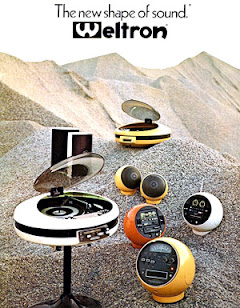



















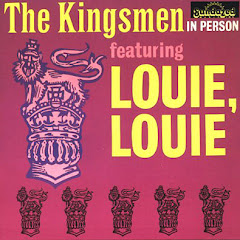












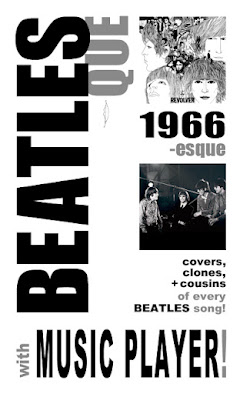
































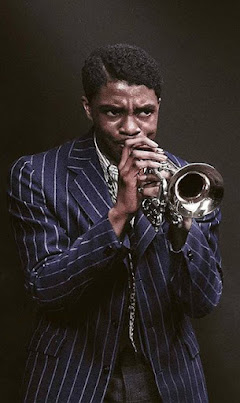







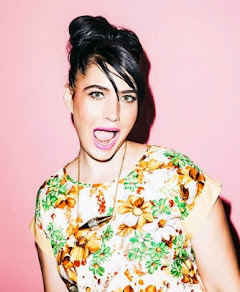




































1 comment:
While you're funking, go get a copy of I Want to Take You Higher: The Life and Times of Sly & the Family Stone, my just-published biography on Backbeat Books. Foreword by Sly, Preface by George Clinton, and you can read all about it at http://www.jeffkaliss.com .
Post a Comment